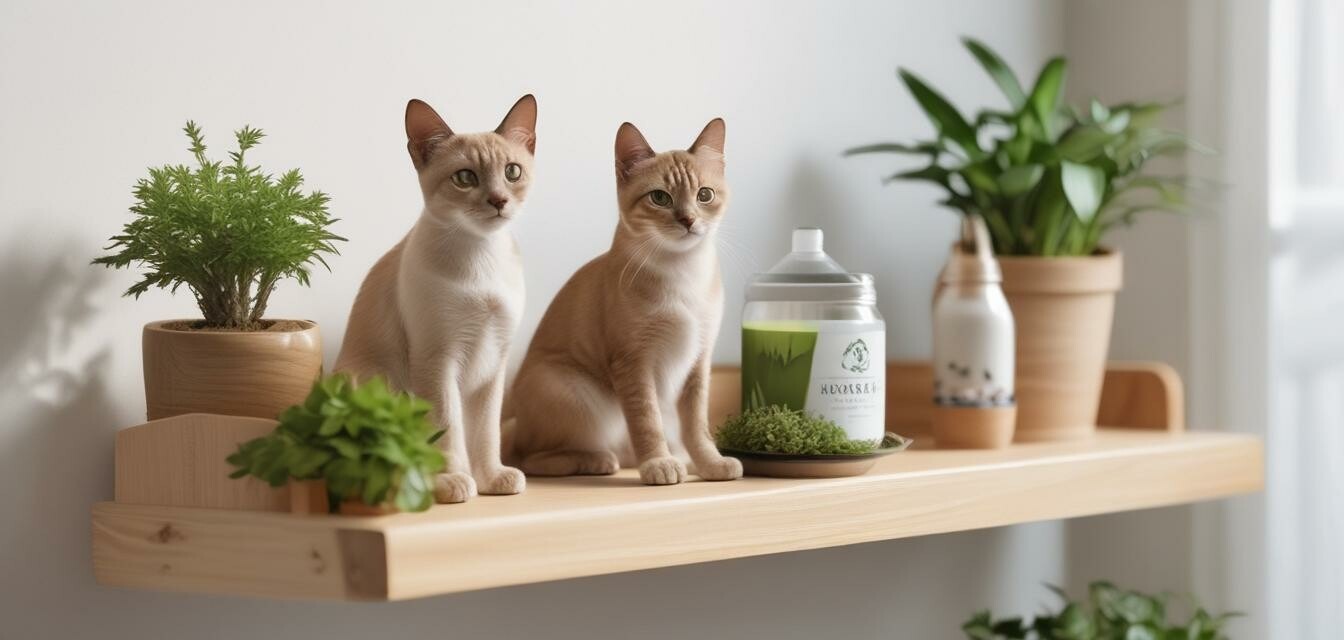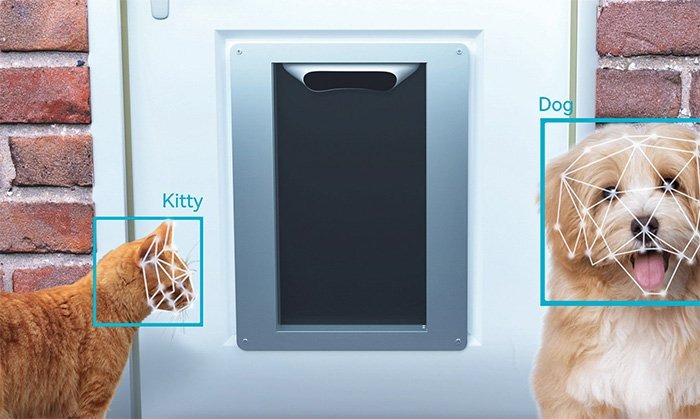
Cat Breeds.
Cat breeds offer a fascinating glimpse into the diversity of feline beauty and behavior. With each breed showcasing unique traits—from coat types and colors to personality quirks and activity levels—there’s a perfect cat for every lifestyle. Whether you prefer a quiet lap companion or an energetic explorer, understanding the characteristics of different breeds helps future pet owners make informed, fulfilling choices in adopting or purchasing their ideal feline friend.
🐶 Pet Star
45 min read · 25, Jun 2025

Introduction
Cats have enchanted humans for thousands of years with their elegance, independence, and mystique. While domestic cats share a common ancestry, selective breeding has led to the development of numerous distinct cat breeds. Each breed carries unique characteristics in terms of appearance, behavior, and health requirements. Whether you're considering adopting a feline companion or are simply fascinated by these animals, understanding the variety of cat breeds can deepen your appreciation for the species and help guide your choices.
Part 1: Popular Cat Breeds and Their Characteristics (Approx. 1000 words)
1. Persian Cat
The Persian is one of the oldest and most recognizable cat breeds. With its long, flowing coat and flat face, it exudes regal elegance. Persians are typically calm, affectionate, and well-suited to indoor life. However, they require daily grooming and are prone to respiratory and eye issues due to their brachycephalic skull shape.
- Origin: Persia (modern-day Iran)
- Coat: Long, thick, requires daily brushing
- Temperament: Quiet, affectionate, prefers a stable routine
2. Maine Coon
The Maine Coon is the largest domesticated cat breed. Originating in North America, this breed is known for its tufted ears, bushy tail, and rugged build. Despite their size, Maine Coons are gentle, social, and good with children and other pets.
- Origin: United States (Maine)
- Coat: Long, water-resistant, semi-maintenance
- Temperament: Friendly, playful, dog-like behavior
3. Siamese
The Siamese cat is striking with its sleek body, blue almond-shaped eyes, and point coloration. These cats are vocal, intelligent, and thrive on interaction with humans. They can become lonely if left alone for too long, making them ideal for owners who can give them plenty of attention.
- Origin: Thailand (formerly Siam)
- Coat: Short, easy-care
- Temperament: Vocal, affectionate, curious
4. Ragdoll
Ragdolls are large, blue-eyed cats known for their docile and laid-back nature. When picked up, they tend to go limp in their owner's arms—hence the name. They get along well with families and are easy to train.
- Origin: United States
- Coat: Semi-long, silky, moderate maintenance
- Temperament: Gentle, affectionate, relaxed
5. Bengal
Bengals are exotic-looking cats with a coat resembling a leopard. They are highly active, intelligent, and playful, often requiring mental stimulation and exercise. Not ideal for laid-back owners, Bengals thrive in an enriched environment.
- Origin: USA (hybrid of domestic cats and Asian leopard cats)
- Coat: Short, soft, patterned
- Temperament: Energetic, confident, intelligent
6. British Shorthair
This breed is known for its chubby cheeks, dense coat, and calm demeanor. British Shorthairs are less active than other breeds and prefer a peaceful home. They are affectionate but not overly demanding of attention.
- Origin: United Kingdom
- Coat: Short, plush, low-maintenance
- Temperament: Loyal, independent, easygoing
7. Sphynx
The Sphynx is a hairless cat breed famous for its wrinkled skin and large ears. Despite their lack of fur, Sphynx cats are warm to the touch and require regular bathing due to skin oil buildup. They are extroverted, playful, and attention-seeking.
- Origin: Canada
- Coat: Hairless (may have peach fuzz)
- Temperament: Curious, social, affectionate
8. Abyssinian
One of the oldest known breeds, Abyssinians are athletic and playful cats with a ticked tabby coat. They are not lap cats but enjoy being around people and exploring their environment.
- Origin: Egypt (theories vary)
- Coat: Short, fine, ticked
- Temperament: Energetic, inquisitive, loyal
9. Scottish Fold
These cats are easily identified by their folded ears, giving them an owl-like appearance. Scottish Folds are sweet-natured and bond closely with their humans. They come in both long and short hair varieties.
- Origin: Scotland
- Coat: Short/Long, plush
- Temperament: Gentle, affectionate, quiet
10. Exotic Shorthair
Often referred to as the "lazy man's Persian," the Exotic Shorthair has the same features as the Persian but with a short, plush coat. They are affectionate and quieter than most breeds, making them excellent apartment companions.
- Origin: United States
- Coat: Short, dense, low-maintenance
- Temperament: Calm, loving, docile
Part 2: Choosing and Caring for the Right Breed (Approx. 1000 words)
Choosing a cat breed isn’t just about appearance—it involves understanding a breed’s temperament, care requirements, health risks, and compatibility with your lifestyle. Here's how to go about it:
Lifestyle Compatibility
If you live in a small apartment and work long hours, a low-energy, independent cat like a British Shorthair may be ideal. On the other hand, highly interactive breeds like the Siamese or Bengal need company and stimulation. Households with kids often do well with sturdy and sociable breeds like Maine Coons or Ragdolls.
Allergies and Shedding
Some breeds are considered more hypoallergenic due to lower allergen production (like the Siberian and Balinese), but no breed is 100% allergy-proof. Sphynx cats may seem ideal for allergy sufferers, but they require frequent baths to manage oil and dander.
Grooming Requirements
Long-haired breeds such as Persians and Ragdolls demand regular grooming to prevent matting and hairballs. Short-haired breeds, like Abyssinians and British Shorthairs, require minimal grooming but still benefit from weekly brushing.
Health Concerns
Purebred cats are often prone to breed-specific health issues. For instance:
- Persians: Breathing problems, kidney disease
- Maine Coons: Hypertrophic cardiomyopathy (HCM)
- Siamese: Dental issues, progressive retinal atrophy (PRA)
- Scottish Fold: Bone and joint disorders due to the gene mutation affecting cartilage
Regular veterinary checkups and a healthy diet are crucial regardless of breed.
Adoption vs. Breeder Purchase
You can find purebred cats through ethical breeders or breed-specific rescues. Reputable breeders should provide health guarantees, allow you to meet the kitten’s parents, and demonstrate proper care. Alternatively, many beautiful and loving mixed-breed cats are available in shelters and rescues, often at a lower cost and with fewer genetic issues.
Temperament Over Breed
While breed tendencies provide a guideline, every cat has a unique personality. Socialization, early life experiences, and environment all play a significant role in shaping behavior. Spending time with a cat before adopting can help you gauge compatibility more accurately.
The Role of Mixed Breeds
Domestic shorthairs and longhairs, commonly found in shelters, make up the majority of pet cats. Though not recognized as official breeds, they are genetically diverse, generally healthy, and possess wonderful personalities.
Cats are among the most cherished pets worldwide, with countless breeds offering a stunning variety of physical features, temperaments, and care needs, making them ideal companions for many different types of households. From the plush Persian to the sleek Siamese, cat breeds have evolved over centuries through natural selection and human-guided breeding to yield a rich tapestry of feline forms. The Persian cat, for instance, is beloved for its luxurious coat and sweet demeanor, though it demands intensive grooming and can suffer from health issues due to its flat face. In contrast, the Maine Coon, known as the gentle giant, boasts a rugged, water-resistant coat and a playful, sociable nature, making it a favorite among families. Meanwhile, the Siamese cat, with its pointed coloring and striking blue eyes, is not only beautiful but also extremely vocal and intelligent, often forming strong bonds with its owners. Ragdolls are similarly affectionate, often going limp when picked up, and are perfect for homes that appreciate a mellow, loving cat. On the more exotic side, Bengals are athletic and energetic with wild markings reminiscent of leopards, requiring ample stimulation and space to thrive. British Shorthairs, with their round faces and dense coats, are a calm and independent breed, making them ideal for working individuals or those seeking a less demanding pet. The Sphynx, though hairless, is known for its warmth and outgoing personality, often shadowing its owner around the house and requiring regular bathing to manage skin oils. The Abyssinian is an ancient breed known for its agility, ticked coat, and curious nature, while Scottish Folds, with their endearing folded ears, exude charm and gentleness but may suffer from cartilage-related issues. Exotic Shorthairs offer all the personality of Persians without the long fur, making them popular among urban dwellers. Choosing the right cat breed involves evaluating your own lifestyle and home environment, as different breeds vary greatly in their needs. High-energy cats like Bengals or Abyssinians might not suit a quiet household, whereas a Persian or British Shorthair thrives in such calm settings. If allergies are a concern, breeds like the Siberian, Balinese, and Sphynx are often better tolerated, though no cat is entirely hypoallergenic. Grooming needs also differ widely; long-haired breeds like Ragdolls and Persians require daily brushing to avoid matting, while short-haired or hairless breeds need far less coat maintenance but may need skincare. Health-wise, many purebred cats are prone to genetic conditions: Persians are susceptible to kidney disease and eye problems, Maine Coons may inherit hypertrophic cardiomyopathy (a heart condition), Siamese cats can face dental and eye issues, and Scottish Folds often have bone and cartilage disorders. Ethical breeding and early health screening are vital when acquiring a purebred cat. However, mixed-breed domestic cats, often available in shelters, are genetically diverse and typically hardier, making them excellent companions without the high risks of breed-specific ailments. Adopting from a shelter not only saves a life but also often means finding a pet with a loving temperament and lower cost. It’s also essential to remember that breed is only one factor in determining a cat’s personality; socialization, environment, and individual temperament play a massive role in how a cat behaves. That’s why meeting a cat before adoption, if possible, is crucial in evaluating compatibility. Even so-called aloof breeds may turn out to be highly affectionate if raised in a nurturing environment. Purebred or mixed, all cats require regular veterinary care, vaccinations, a balanced diet, clean litter boxes, mental stimulation, and affection to thrive. Whether you’re drawn to the aristocratic aura of the Persian, the adventurous charm of the Abyssinian, the striking presence of the Bengal, or the easy-going vibe of a domestic shorthair, your bond with your cat will ultimately be shaped by mutual understanding, time, and trust. As cat lovers often say, you don’t own a cat—the cat owns you. And in the wonderful world of feline breeds, there's a perfect match for every personality waiting to be discovered.
Cats, one of the most beloved domestic animals in the world, come in a wide variety of breeds, each possessing its own unique set of characteristics in terms of appearance, temperament, grooming needs, and health considerations, making them a fascinating subject for pet lovers and breeders alike; from the majestic Persian cat, known for its luxurious long fur and calm, affectionate nature, to the active and athletic Bengal, with its wild leopard-like spots and energetic personality, cat breeds offer something for every type of owner, whether you live in a busy household with children or prefer the quiet companionship of a more laid-back feline friend, and while many people are familiar with popular breeds such as the Siamese, famous for its elegant body, almond-shaped blue eyes, and talkative nature, or the Maine Coon, often dubbed the “gentle giant” for its large size and friendly demeanor, the world of cat breeds is far more expansive and diverse than many might initially believe; there are over seventy recognized cat breeds globally, with each one having a unique origin story, from ancient breeds like the Egyptian Mau, which is thought to descend from the cats worshipped in Ancient Egypt, to more recently developed breeds such as the Ragdoll, a docile, affectionate breed that goes limp when held and is known for its striking blue eyes and semi-long silky coat; the Sphynx, a hairless breed originating in Canada, stands out not only for its lack of fur but also for its extroverted, playful personality and need for frequent bathing due to oil build-up on its skin, while breeds like the Abyssinian are appreciated for their energetic disposition and ticked coat pattern that gives them a wild, fox-like appearance; when choosing a cat breed, prospective owners must consider factors such as grooming requirements—long-haired breeds like the Persian or Himalayan require daily brushing to prevent matting, whereas short-haired cats like the British Shorthair need only occasional grooming—and temperament, as some breeds are highly social and thrive on human interaction, like the Siamese or the Oriental Shorthair, while others, like the Russian Blue or Chartreux, are more reserved and independent; health considerations are equally important, since purebred cats are sometimes prone to genetic disorders specific to their breed—Persians may suffer from polycystic kidney disease and brachycephalic airway syndrome, Maine Coons are at risk for hypertrophic cardiomyopathy, and Scottish Folds often develop cartilage and bone issues due to the genetic mutation responsible for their folded ears—so it’s essential to source cats from ethical, responsible breeders who conduct health screenings and avoid inbreeding; however, many wonderful cats available for adoption in shelters are mixed-breed domestic shorthairs or longhairs, which tend to be healthier due to a more diverse gene pool and can offer just as much affection, beauty, and companionship as their pedigreed counterparts; choosing between adopting a shelter cat or purchasing a purebred one often comes down to personal values and preferences, but it’s important to remember that every cat, regardless of its lineage, deserves a loving home and responsible care throughout its life; some breeds, such as the Turkish Van, are known for their unusual love of water and swimming ability, while others, like the Manx, are distinguished by their lack of a tail, which results from a natural genetic mutation; physical attributes vary widely among breeds: ear shapes can range from the large, bat-like ears of the Oriental Shorthair to the folded ears of the Scottish Fold or the curled ears of the American Curl, while coats can be long, short, curly, or even hairless, and colors span every hue and pattern imaginable, including solid, tabby, bicolor, tricolor (calico), colorpoint, and more; despite the differences, all cat breeds share the same basic needs: a balanced diet, access to clean water, regular veterinary checkups, mental and physical stimulation through play, clean litter boxes, and, most importantly, affection and attention from their human companions; it’s also worth noting that some breeds adapt better to indoor living than others—breeds like the Ragdoll, Persian, and Exotic Shorthair are well-suited for apartment life due to their calm and sedentary nature, whereas more active and curious breeds such as Bengals, Abyssinians, and Savannahs require larger spaces, interactive toys, climbing structures, and even leash training to stay healthy and happy; in terms of intelligence and trainability, breeds like the Siamese, Bengal, and Burmese are often eager to learn tricks, play fetch, and even use puzzle feeders, while others may be content to lounge and observe; for allergy sufferers, breeds like the Siberian and Balinese are sometimes recommended due to their lower levels of the Fel d 1 protein, though no breed is truly hypoallergenic and reactions vary from person to person; as our understanding of feline genetics and behavior continues to grow, more people are taking an interest in adopting specific breeds not only for their looks but also for their compatibility with lifestyle, family structure, and home environment, making breed research a vital step in the adoption process; whether you are looking for a loyal lap cat, an active hunter, or a quiet companion, there is a breed—or a mix—perfect for your needs, and ultimately, the bond between human and cat transcends breed standards and pedigree papers, offering unconditional companionship, comfort, and joy to those who welcome these incredible creatures into their lives.
Conclusion
The world of cat breeds is as diverse as it is fascinating. From regal Persians to agile Abyssinians, every breed offers a unique mix of looks, behavior, and care needs. Understanding the specific traits of each breed can guide you toward choosing a cat that fits your lifestyle and preferences. Equally important is considering the emotional bond and long-term commitment involved in cat ownership.
While purebred cats provide a predictable set of characteristics, mixed-breed and shelter cats can be equally affectionate and healthy. Ultimately, choosing a feline companion should involve both heart and head—a blend of admiration, understanding, and responsibility.
Q&A Section
Q1 :- What is the most low-maintenance cat breed?
Ans:- The British Shorthair is considered one of the most low-maintenance breeds due to its calm temperament and easy-care coat.
Q2 :- Which cat breed is best for families with children?
Ans:- The Maine Coon and Ragdoll are both excellent choices for families because of their gentle and tolerant nature.
Q3 :- Are there any hypoallergenic cat breeds?
Ans:- No cat is completely hypoallergenic, but breeds like the Siberian, Balinese, and Sphynx produce fewer allergens.
Q4 :- Which cat breeds are most vocal?
Ans:- Siamese, Oriental Shorthairs, and Bengals are known for their high vocalization and communicative nature.
Q5 :- What cat breed is most suited to indoor life?
Ans:- Persians and Exotic Shorthairs adapt well to indoor environments and enjoy a stable routine.
Similar Articles
Find more relatable content in similar Articles

Sustainable Pet Products: What to Look for in 2025...
As sustainability becomes a ce.. Read More

How Climate Change Affects Wild and Domestic Animals...
Climate change is dramatically.. Read More

How Pets Strengthen Family Bonds...
Pets are more than just compan.. Read More

Smart Homes for Pets: Automated Feeders, Doors, and Mo..
As smart home technology advan.. Read More
Explore Other Categories
© 2024 Copyrights by rPets. All Rights Reserved.